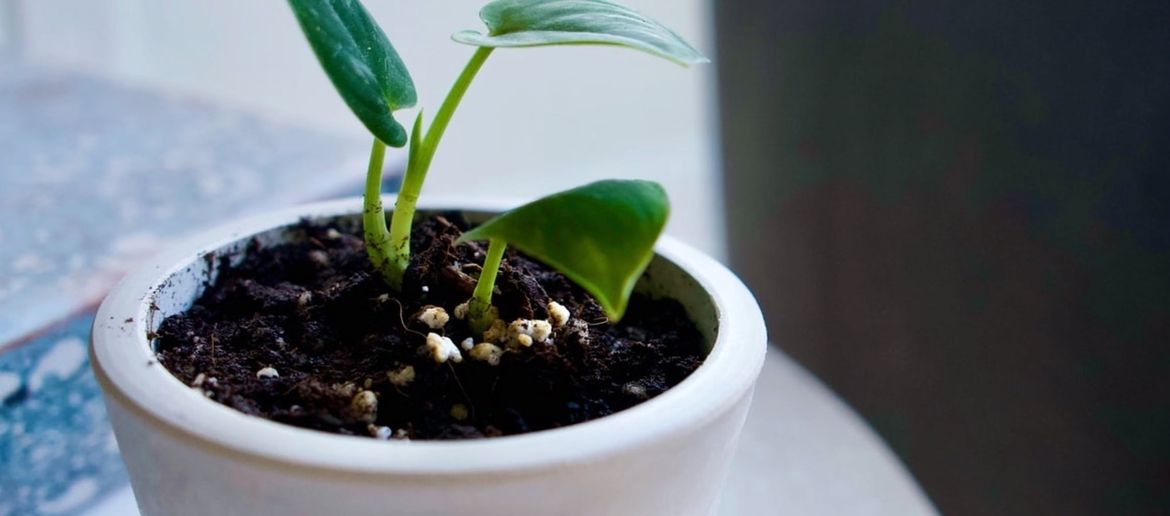Mould On Potting Soil - Harmless Or Dangerous?
What can you do to combat fungus?
Mould in houseplant pots is basically harmless to humans - unless your immune system is weakened or you have an allergy to mould. Then you should wear an appropriate mask when working with plants.
Mould growing in pots can deprive young plants of important nutrients. In the worst case, they could die. However, it poses no danger to all other plants.
Is it really mould?
Before you start fighting mould on potting soil, first determine whether it actually is the dreaded fungus, because not everything that shows up as white deposits on soil is mould. If the white spots are rather crumbly, hard, dry and spread out over a large area, the all-clear can be given, because then it is most likely salt or limescale deposits. Mould, on the other hand, is soft and fluffy and appears as small islets on the soil.
Why is soil mouldy in a pot?
In principle, fungal spores can be found everywhere in the air - this is completely normal and not dangerous. If mould becomes visible in plant pots, it's because they've found optimal growth conditions. These include the following four points:
- A high proportion of organic matter: High-quality, peat-free organic soils in particular have a high proportion of organic matter and thus create the conditions for mould to proliferate. Unfortunately, the formation of mould in organic soil can never be completely prevented - it's sometimes there when you open the bag. Read more on this topic below.
- High humidity: Mould thrives in high humidity on walls and in plant pots.
- Soil that's too wet: Too frequent watering and the associated constantly wet surface of the soil provide mould with the ideal conditions for growth.
- Heat: If heat is added to high humidity and constantly wet soil, mould has hit the jackpot, because damp heat is the growth driver par excellence for mould.
What to do with mouldy soil in pots?
If mould is visible in a plant pot, it's not the end of the world. The following tips will help you get rid of unwanted fungi:
- Ventilate properly: To prevent mould from forming in indoor plant pots, ventilate rooms regularly. It's better to open the windows fully for five to ten minutes every day than to tilt them for longer.
- Let the surface of the soil dry out: Make sure that the surface of the soil in the plant pot is always dry, depriving mould of the basis for settling in the pot.
- Watering from below: Watering the saucer from below helps to keep the surface of the soil in the plant pot dry and still provides the plant in the pot with the necessary amount of water.
- Repotting: If the mould infestation is very advanced, only repotting the plant will help. You should also rinse the plant's root ball thoroughly with water to remove all remnants of the infested substrate before you plant it in fresh soil.
The soil is mouldy in the bag - what should you do?
You open a bag of potting soil you've just bought, look forward to a lot of planting and what do you see? Disgusting white spots.
Visible white deposits on soil are actually fungal spores. Sometimes mould is in freshly bought potting soil. This usually has a simple cause and is nothing to worry about. In very high-quality organic soils, the lack of peat increases the proportion of organic matter and fungi such as Trichoderma ssp. or peziza (muglings) find plenty of food. This cannot be completely prevented in proper organic soils, but it does not pose any danger to the plants that later grow out of the soil, and has no influence on the quality of the soil.
If you discover such light-coloured deposits when opening a bag of soil, we recommend loosening and mixing the soil with your hands. This should destroy the fungus and prevent it from coming back.
However, if a large part of the soil is covered with mycelium, this can also be due to poor storage. Then mixing won't help and you should dispose of the soil.
Remember, bags of potting soil that have already been opened should be stored in a dark, cool place and protected from the weather to prevent a mould infestation.
We hope that this article has shed some light on mould in potting soil. Happy gardening!
Related products
-
 5.0 (2)
5.0 (2)elho greenville Planter Round 18cm, Living Black
-10%- Living Black
- White
- Leaf Green
- Living Concrete
- Golden Sand
- Suitable for indoor and outdoor use
- Includes water reservoir
- Sustainably produced
£8.19 £9.10Delivery by April 24
-
 4.0 (1)
4.0 (1)Burgon & Ball Transplant Spade
-10%- For shoveling & cutting
- Outstanding quality
- With a practical leather loop
£20.70 £23.00Delivery by April 24
Magazine Articles:
Discover Bloomling:
-
Great Britain: Free standard delivery from £49.90
-
Free
returns More than 6.100 products
Secure payments
with SSL encryption technology

